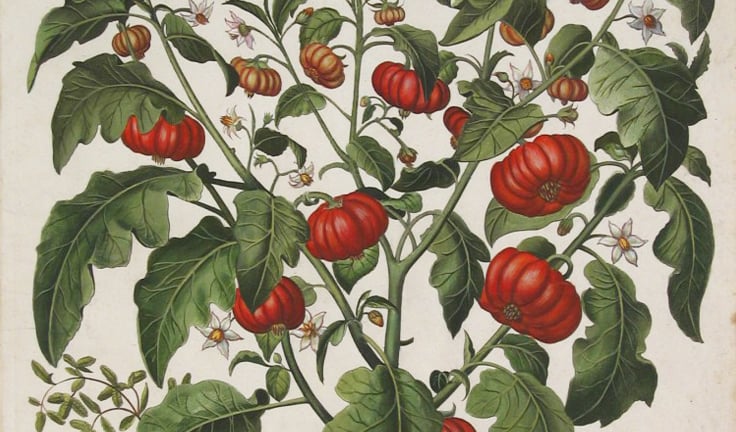Mérida Yucatán (March 10, 2021).-We will tell you the story of this fruit that is currently indispensable for most of the world’s kitchens. The tomato “jitomate” was domesticated by the Mesoamerican peoples 2,600 years ago.
The tomato is one of the most used fruits in international gastronomy, essential for cuisines such as Italian or Mexican. Its origin is located from Mexico to South America, however, its domestication occurred in our country. The Mexica knew it as xīctomatl, a Nahuatl word that means “fruit with a navel”. The Aztecs and other cultures of Mesoamerica used the tomato in their cooking since before the arrival of the colonizers. Although it is not known when it was domesticated, it is estimated that it happened in 500 BC.
There is archaeological evidence that the green tomato, which is used in many Mexican sauces, was used in pre-Hispanic cuisine. This suggests that the tomato also had a strong roots among indigenous peoples.
For his part, the chronicler Bernal Díaz del Castillo, author of the book: The true story of the New Spain Conquest (La verdadera historia de la Conquista de la Nueva España) says that during his trip from Veracruz to Tenochtitlán, the indigenous people of Cholula wanted to kill and eat them. About this, he mentions: “They had pots ready with peppers, tomatoes, and salt.” This confirms the presence of the tomato in pre-Hispanic cuisine.
For the second half of the 16th century, Francisco Hernández, physician to King Felipe II, was commissioned to make a catalog of the plants used in New Spain, describing the tomato in the following way: “The largest of them are called xitomame , it is I mean, take me squash-shaped and rough. “

He added that the tomato was used medicinally to relieve sore throats, headaches, treat the digestive system, ear pain, and mumps.
Tomato’s journey to the Old World
After the arrival of the Spanish, Hernán Cortés became the first tomato exporter to Europe. Twenty years later the tomato was mentioned for the first time in an Italian text, when Pietro Andrea Mattioli pointed out the appearance of a type of eggplant in Italy, from then on, the red tomato spread throughout Europe and Asia.
In customs, the registration of the entry of plants was of little importance, so there is no registration of the arrival of the tomato through the port of Seville. Initially, it was planted in the botanical gardens of southern Spain, from there it quickly traveled to the rest of the Mediterranean countries. Thanks to the warmth of the Mediterranean soil, tomato cultivation prospered.

The tomato was planted in family pots and received the name of poma-amoris or “apple of love.” As a consequence, this fruit was attributed aphrodisiac properties, especially among the French.
For his part, Galindini from Padua referred to the tomato as “the tumatle of Themistitan” . This is because there were two letters from Hernán Cortés signed in Temixtitán, a name that actually referred to Mexico – Tenochtitlán.
Little by little the tomato was introduced into the Mediterranean cuisine.
Unlike chili peppers, the tomato had a sweet taste and was not as hot, which is why this fruit was adopted by Europeans and Africans alike. Over time the tomato continued its domestication in Italy, where the varieties that are popular today were born.
Currently, the tomato receives the scientific name of Solanum Lycopersicum, it belongs to the genus Solanum and is related to the eggplant.
Tomato properties
We list some of the properties of the tomato or raw tomato.
- Contains vitamins A, B1, B2, and C.
- Provides minerals such as calcium, phosphorus, potassium and sodium.
- Medicinally it is antiseptic, alkaline, purifying, diuretic, digestive, laxative, anti-inflammatory and remineralizing.
- It is used in case of liver diseases, burns, obesity, rickets. It also helps fight various forms of cancer.
- Tomato juice is an excellent hangover helper.
- Detoxifies the skin and organs.
- It is a natural source of folic acid, which is why its consumption is recommended during pregnancy.
San Miguel Times
Newsroom

